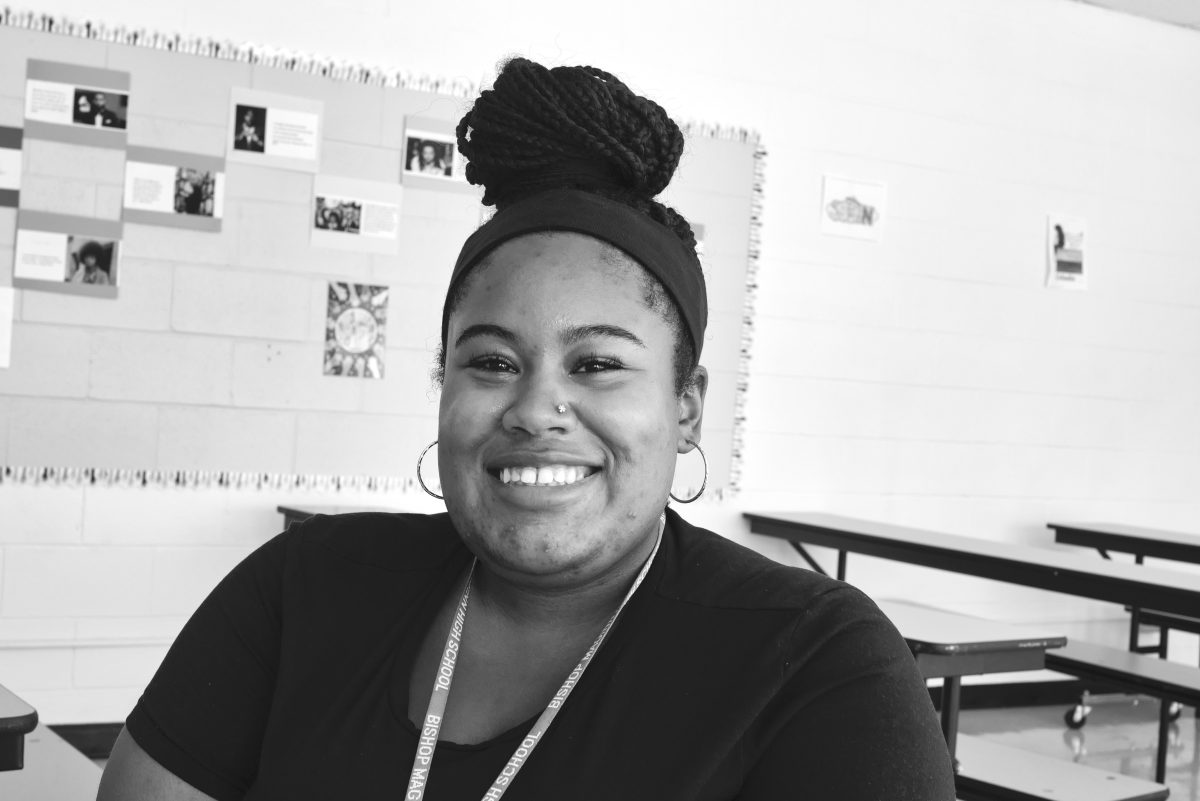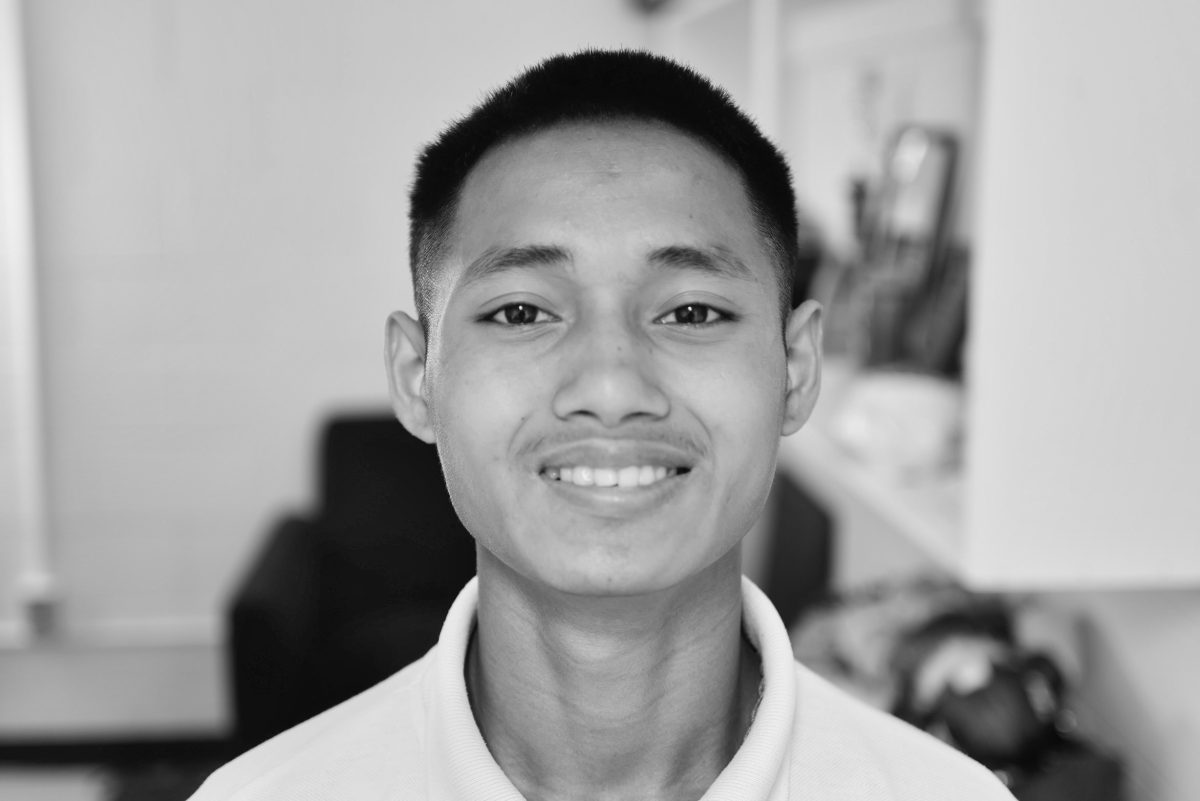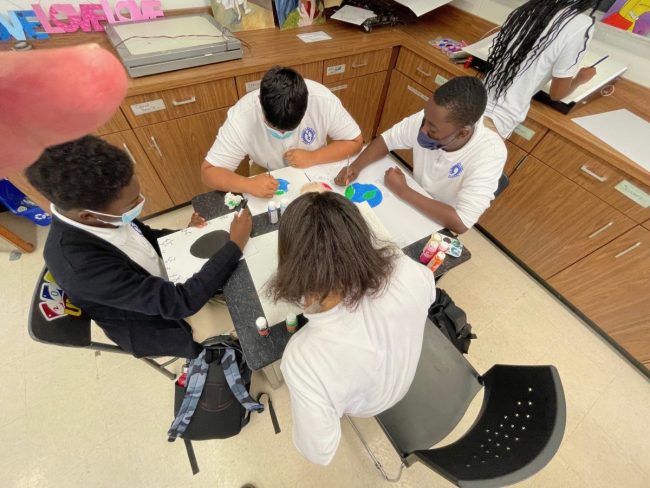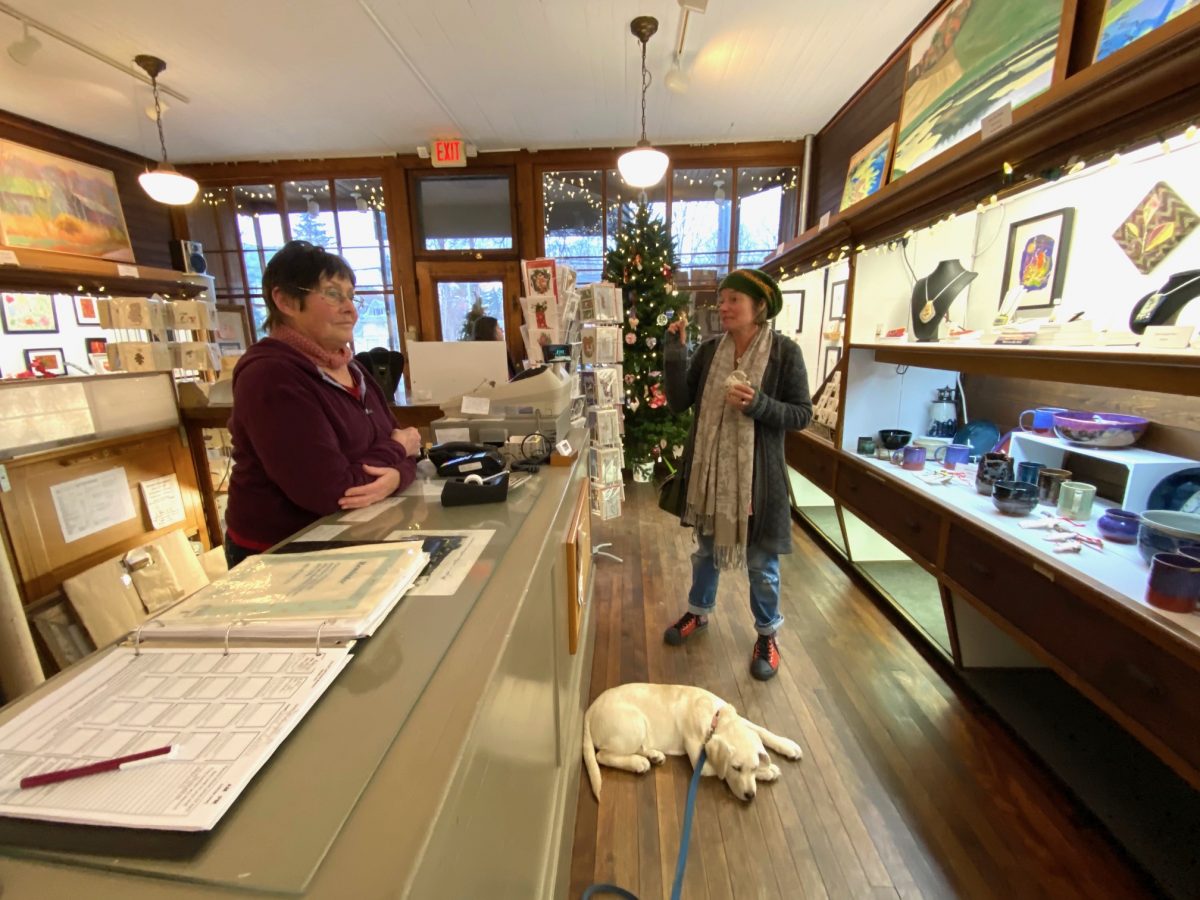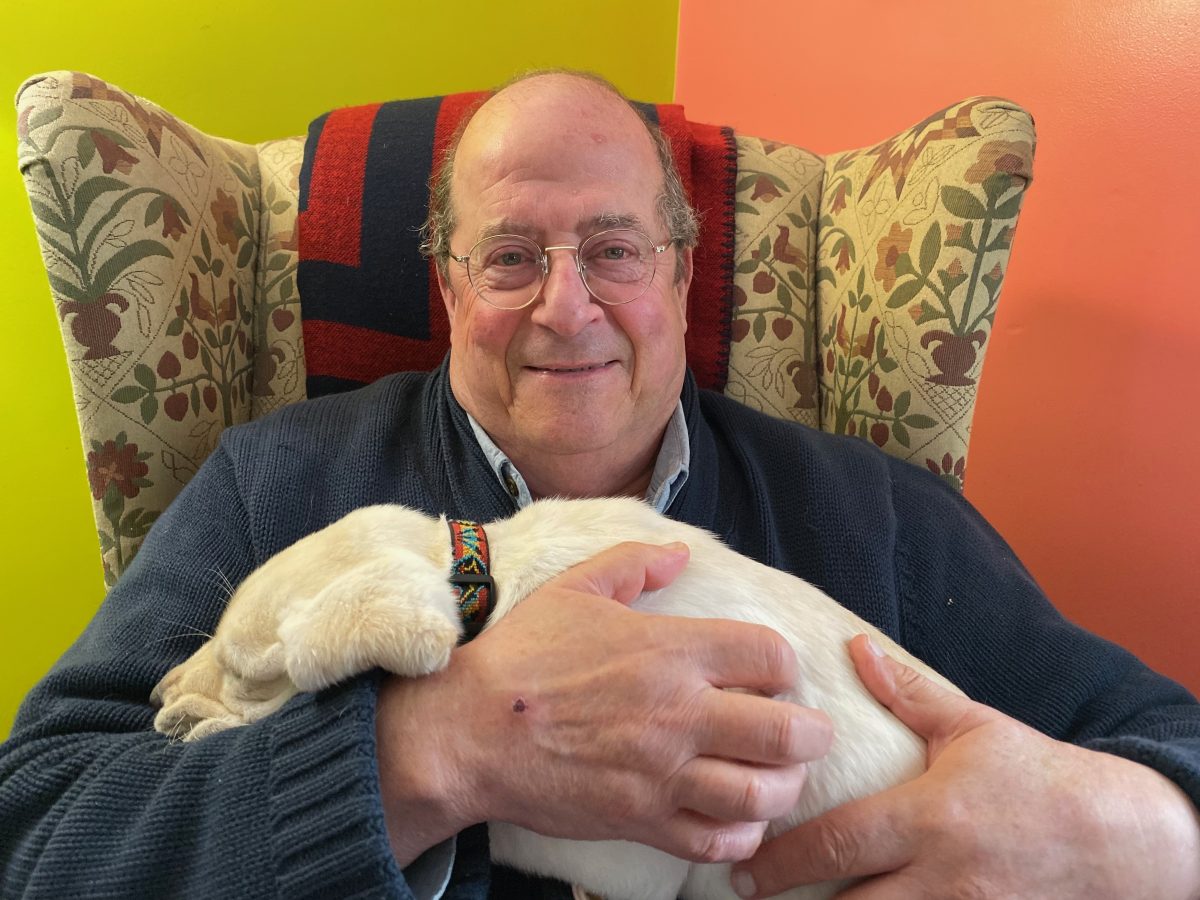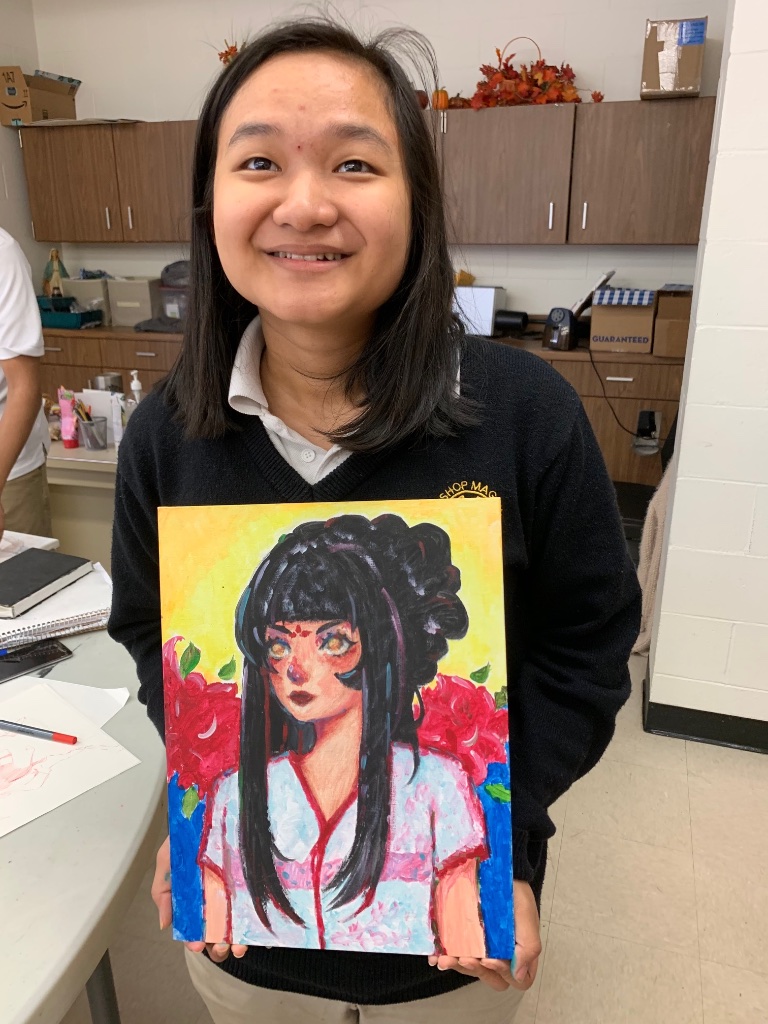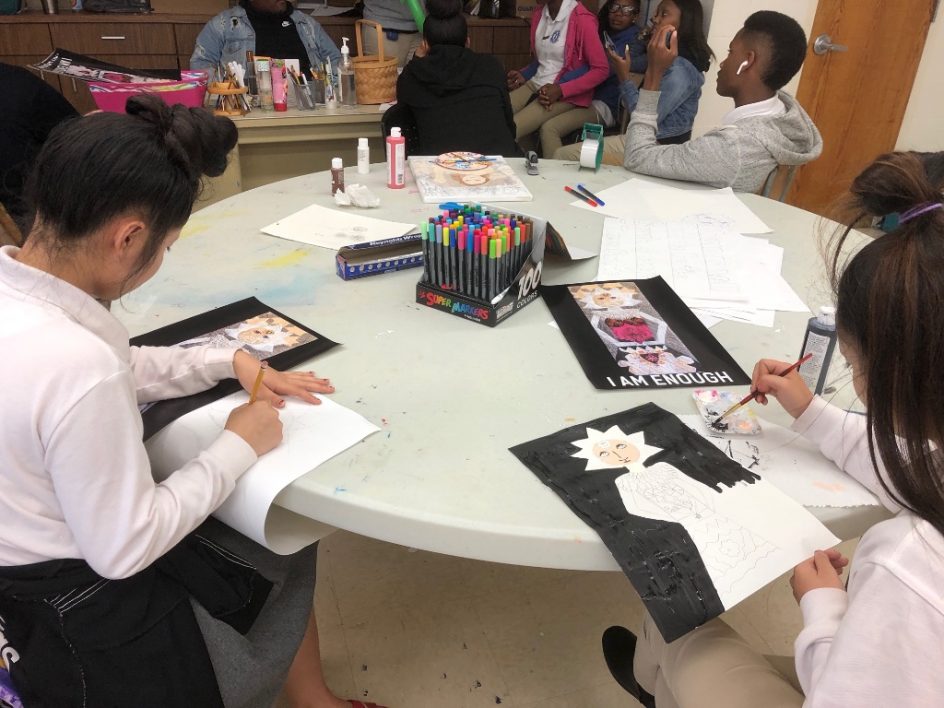The highest compliment one can pay a teacher at Bishop Maginn High School is that they remind people of Sue Silverstein, the much-loved art and theology teacher and my good friend.
She has transformed so many lives and is one of the most universally loved and admired people I have ever met.
She has made our work at Bishop Maginn possible.
She lives and breathes to do good and is an inspiration to me in my work. A Catholic School teacher, she is, unlike so many of her fellow Christians, paying attention to the teachings of Jesus Christ.
What everyone is saying about Lareina Torain is that she is the next Sue Silverstein. That’s why I asked to interview her. They had a point. She is a truly remarkable person, particularly at any age, astonishing for a young person fresh out of college.
Lareina, who is 23, is the youngest and newest teacher on the Bishop Maginn faculty. She has had a solid connection to Sue for much of her young life. She played the character of Sue Silverstein in the Bishop Maginn senior skit in 2016. Sue Silverstein taught her every year of her four years as a student at BMHS.
Sue became her model of the perfect teacher for her. “She is the foundation, the stone,” she says of Sue.
Sue spotted Lareina’s intelligence and drive early on, encouraged her, taught her, and helped her through difficult times. “I want to do the same thing for my students that she did for me,” Lareina told me today when I went to Bishop Maginn to talk to her in her classroom.
As a new and thoughtful addition to the school’s faculty, I plan to visit her every couple of months and follow her life as a new teacher in a complex and fascinating place.
After speaking with Lareina for nearly an hour, I saw that she could also do much more even than Sue did – her understanding of pop culture and diversity and the diverse youth that make up the school brings a new dimension to Bishop Maginn. She is something they have been looking for for years, and they can thank the pandemic for finding it now.
Perhaps because she was a teenager so recently, she understands her students in a particular way. She hasn’t forgotten what it’s like and grew up in their dizzying and all-encompassing culture.
She says she has to learn to connect with them, prepare them for a diverse and divided world. She supports the Black Lives Matter movement and is an advocate for transgender people. She is eager to break down the stereotypes that block our understanding of the modern world, here and in other countries.
“I need to open up my students to other people, other cultures.” As an Afro-American and a Latina, she sees the world through several different lenses. She’s often right where her students are.
Lareina’s brain fairly sparkles; she has so many fresh and topical ideas. She is awash in enthusiasm.
One way to relate to modern students, she says, is to use music to reach them. She starts her classes by playing a couple of minutes of music from our country and other countries and cultures.
They listen, talk about the rhythms and beats and writing. This relaxes her students right away, and their culture – everyone at Bishop Maginn is deeply into music – connects with hers, something they don’t expect from a teacher.
She also wants to have an impact on the students that Sue Silverstein has had. “I don’t know if I would be here if she weren’t for her. It’s an honor to be compared to her. Everyone loves her, and I would love to be loved like she is. I still call her Mrs. Silverstein; I can’t help it.”
This may be more possible than she might think, being so new to the job. Sue Silverstein is one of the people who told me that Lareina is the next Sue Silverstein. Lareina is too modest to describe herself that way, but there is something quite special about her.
Sue, she says, is one of the strongest people she has ever met. “She carries all the water and all the weight. She is the foundation of the school and the good things that happen here.”
She sees her challenge as opening up her students to a changing and sometimes angry world. She wants them to understand it and think about what they want from life.
“I hope to help them make good decisions for themselves. I happen to believe that college is not for everyone. If they want to make different choices, they should be encouraged, not forced into following the crowd.”
“These kids are complicated,” she said, “they have 100 devices in their ear all the time; they have to deal with social media, music, and fight distraction all the time. My job is to break through.
Lareina is a dog lover; she has two Yorkies at home, she loves reading, music, and movies.
Lareina already loves to teach, loves her students, listens to them, helps them when they’re in need, supports them when they are low, guides them when they stumble or fall. We talked about how easy it is to be upbeat when you start, how hard to maintain that enthusiasm over time. I guessed her answer. Sue did it. And Sue is middle-aged and has been teaching a long time.
Sue approached Lareina bout a teaching assistant’s job last Spring when she graduated from Sienna College. Even before she could start work as a TA, the pandemic changed her life. First, it nearly shut the school down. Then, it brought in a flood of new students.
The school’s enrollment exploded – many people didn’t care for how the public schools handled the pandemic – and Bishop Maginn desperately needed more teachers. Lareina got promoted by Principal Mike Tolan before she even arrived. He was delighted when she accepted.
She teaches Spanish 1 and 2 and World History.
Her first teaching job is a transformative one for the school and its students.
Lareina brings a modern cultural sensitivity to her students. She is a fresh wind in a place that is eager and willing to change.
She emphasizes diversity in her classes. She is part Latina, part African-American. She can relate to the students and the idea of technology and diversity, a perfect fit for the school, one of the most diverse schools in the Northeast, if not the country.
I asked her to list some of the most critical challenges for a young teacher at a poor Catholic High School in the middle of Albany’s most impoverished neighborhood. What were her priorities as a teacher?
She didn’t blink.
l. Trust.” I need to be honest and transparent; I need to be open to them and encourage them to be available to me.”
2 Age.” I understand that their lives are full of distractions. Tech is in their heads 24 hours a day, seven days a week. They have 100 thoughts in their heads at all times. It’s not easy to learn.”
3. “Music goes a long way towards connecting with kids; if you watch them, they are listening to music all day. Listening to music and talking about music goes a long way towards opening them up to me.”
4. Diversity isn’t just about being African-American or Latina, she says.” Diversity is about understanding the country, the world, and the many diverse and different people and cultures we know little about and are taught little about.”
5. Help. “As a teacher,” she said, “It’s my job to spot trouble, to watch for the signs of distress, body language, attention. It’s my job to be observant. It’s my job to help them.”
I wish I had more time to talk with this extraordinarily articulate and passionate young teacher, but the lunch bell rang. I could have easily talked with her for another hour.
She surely could be the next Silverstein, the future of this, or whatever school she is at. She strikes me as a perfect fit for Bishop Maginn High School. Principal Tolan will give her guidance and room to try out her ideas, and her mentor and friend Sue Silverstein are in the classroom right across the hall. Sue knows how to be observant and how-to guide without suffocating.
I wish I had a teacher like this young woman; my daughter had a teacher like Lareina. I will enjoy watching the ripples that flow from the great splash I am sure she will make. I hope to share her journey with you, bumps and all. Bishop Maginn is a mesmerizing place to be. It says so much about America.
Lareina is savvy without bearing arrogant, compassionate without being sappy, empathetic without being smothering. And like any great teacher, she is passionate about teaching, determined to be of value to her students.
She is impressive, way beyond her years.
I talked to her about the Army Of Good and our work and encouraged her to let me or Sue know if her students needed help if they didn’t have shoes or jackets or required books or music they couldn’t afford.
I was excited when I left her office. I think she will be the next Sue Silverstein if she wants to be. I think I’ve met the future of Bishop Maginn, and its name is Lareina.

